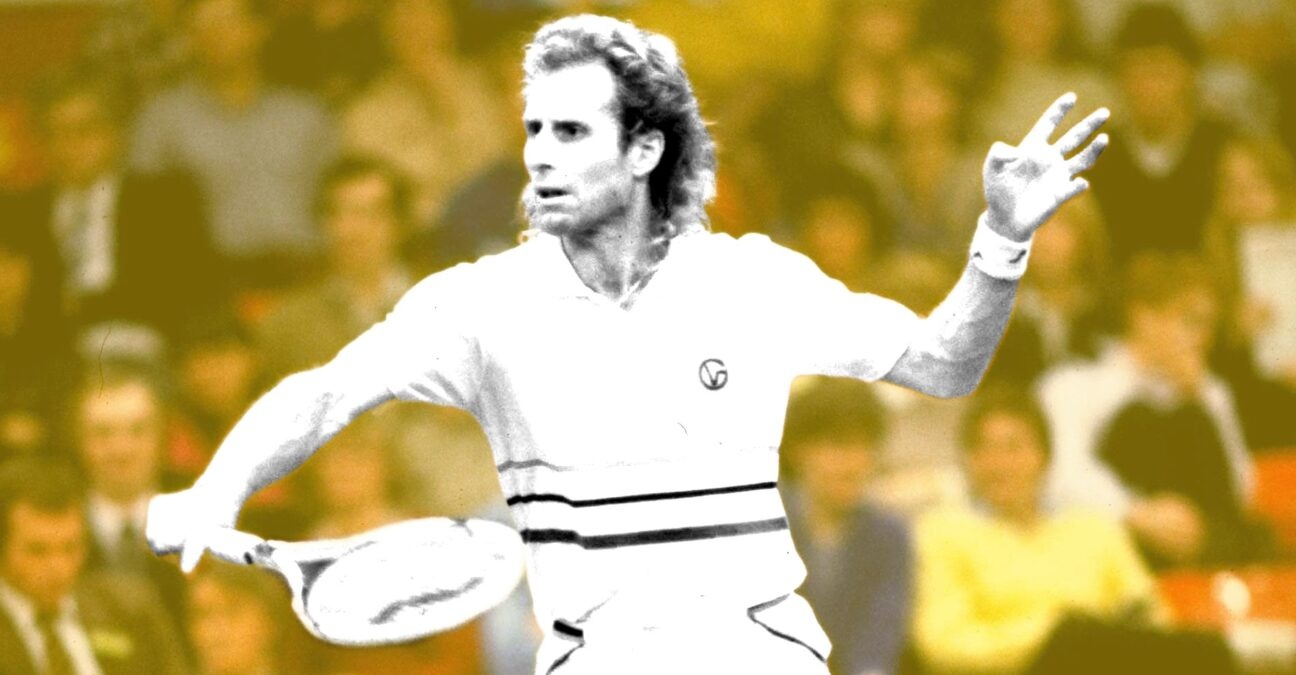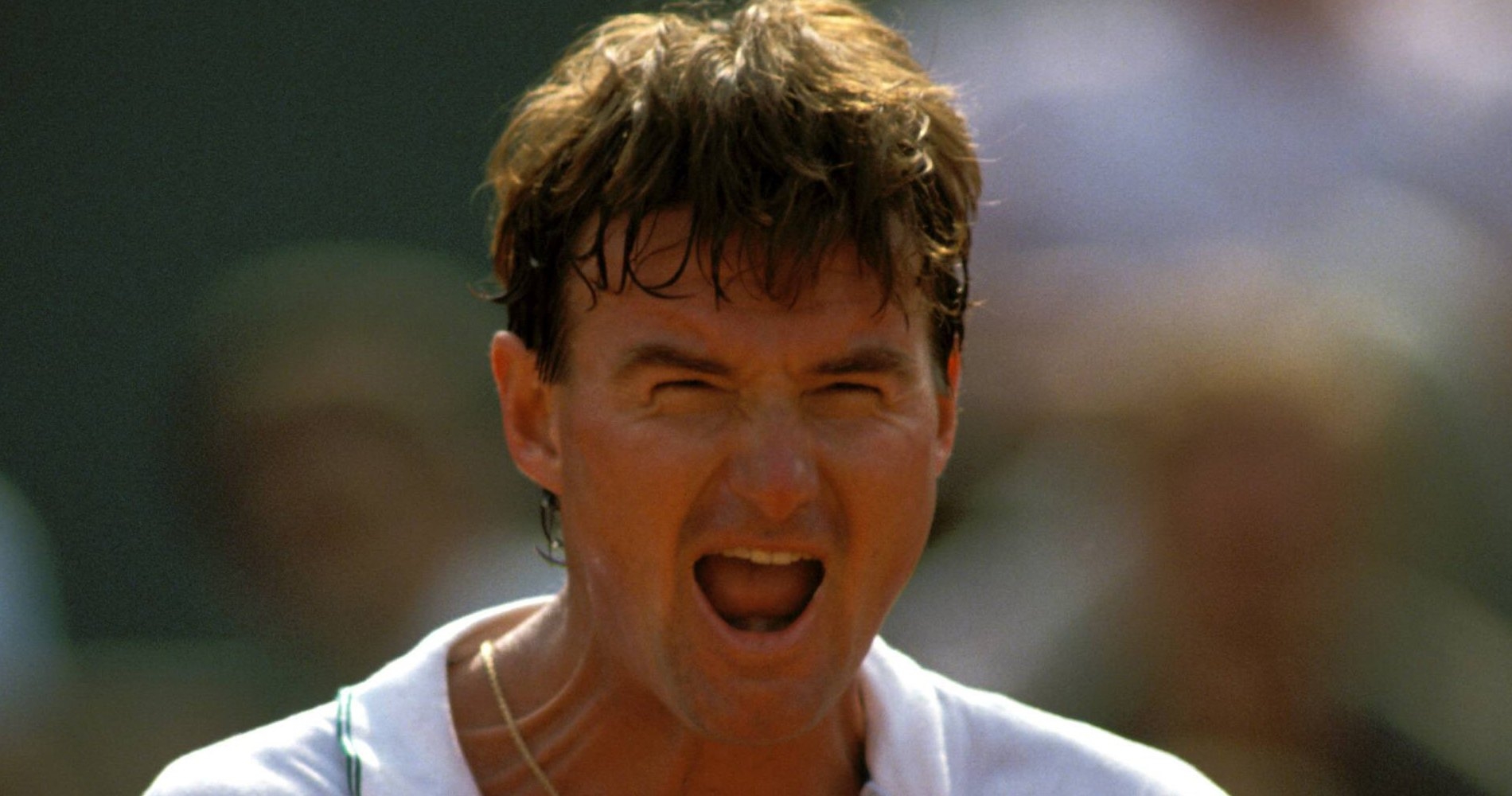January 12, 1980: The day Vitas Gerulaitis made his famous quote, “No one beats Vitus Gerulaitis 17 times in a row”
Every day, Tennis Majors looks back at the biggest moments in tennis history. On January 12, 1980, Vitas Gerulaitis beat Jimmy Connors after losing to his rival 16 times in a row
 Vitas Gerulaitis OTD 01_12
Vitas Gerulaitis OTD 01_12
What exactly happened on that day?
On this day, January 12, 1980, after defeating Jimmy Connors in the Masters semi-finals (7-5, 6-2), Vitas Gerulaitis came up with what has become one the most epic quotes in tennis history: “And let that be a lesson to you all. No one beats Vitas Gerulaitis 17 times in a row.”
Indeed, Gerulaitis had lost his 16 previous clashes to the former world No 1. In this match, Connors also showed unusual sportsmanship, by giving away a set point to correct a wrong line call.
The players: Vitas Gerulaitis and Jimmy Connors
- Vitas Gerulaitis: Tennis’ playboy
Vitas Gerulaitis, born in 1954 in New York, claimed the first of his 15 career titles in Vienna in 1974, defeating Andrew Pattison in the final (6-3, 3-6, 6-4, 6-2). In 1977, he took his career one notch higher, winning the most important tournament of his career at the Monte-Carlo Open (defeating Antonio Zugarelli in the final, 6-2, 7-6, 3-6, 7-6). The ‘Lithuanian Lion’ climbed as high as world No 3 in March 1978, after a great 1977 season where he claimed his first and only Grand Slam title at the Australian Open, defeating John Lloyd in the final (6-3, 7-6, 5-7, 3-6, 6-2). A few months earlier, he had reached the semi-finals at Wimbledon, defeated by his friend Bjorn Borg in one of the greatest matches in the tournament’s history (6-4, 3-6, 6-3, 3-6, 8-6). Gerulaitis also finished runner-up to John McEnroe at the 1979 US Open (7-5, 6-3, 6-3).
The American was just as famous for his off-court personality. According to The Independent, “nobody contributed more to making tennis the coolest sport in town. ‘Broadway Vitas’, the ultimate tennis playboy, dated actresses and models, played in a rock band, partied till the early hours.” Gerulaitis was also known for his sense of humour; in 1977, prior to his first Grand Slam title, he had declared that if he “could be as successful on the tennis court as [he was] off it, [he would] be No 1.”
- Jimmy ‘Jimbo’ Connors: The American Grand Slam champion

Jimmy Connors, born 1952 in Illinois, United States, was one of the greatest tennis players of his time. Coached by his mother Gloria, “Jimbo”, as he was known, was among the first few players to hit the ball flat and predominantly from the baseline. Hitting the ball on the rise, his game would be very influential for future generations of tennis players. Connors turned pro in 1972 and became world No 1 by 1974. In fact, that year, he won three out of the four Grand Slam tournaments and was not permitted to participate at Roland-Garros, the fourth one, due to a lawsuit he filed against the ATP.
The American stayed on top of the ATP rankings for a record 160 weeks in a row, from 1974 to 1977. Losing the top spot to Bjorn Borg on August 23,1977 for just one week, he reclaimed it for another 84 weeks until the spring of 1979. He had won five Grand Slams titles until that point; the Australian Open (1974), Wimbledon (1974) and the US Open (1974, 1976, 1978). In 1979, Connors had not performed as well as in his peak years. He had not reached a Grand Slam final for the first time since 1973 but was still ranked No 3 in the world.
The place: Madison Square Garden, New York
Established in 1970, the year-end Masters was the final showdown between the eight best players in the world. Held in a different location every year at the start, the tournament settled temporarily at Madison Square Garden in New York in 1977. In the “World’s Most Famous Arena”, the Masters Cup became more than just a tennis tournament, it was a spectacle.
In this first edition, tickets were sold out well in advance, with more than 18,500 spectators packing the stands. The tournament director, Ray Benton, had moved the event to January, in order to avoid a clash with American football, and, before the upcoming Super Bowl, the Tennis Masters Cup was the main sports event in the United States that week.
The facts: Connors takes an early break but Gerulaitis wins in straight sets
When Gerulaitis met Connors in the semi-finals of the 1979 Masters Cup held in early January 1980, it was safe to say that he was not the favourite. Although he had pulled out a great performance in the round-robin stage to defeat McEnroe (3-6, 7-6, 7-6), the odds were against him as he had lost his last 16 clashes with Connors.
At the start, it seemed that Connors was going to continue his domination over Gerulaitis as he took a 5-3 lead. In this ninth game, several over-rules led to confusion and after Gerulaitis saved a first set point, Connors obtained a second one, which the New Yorker saved with an ace. That ace was called out very late by the linesman but as Gerulaitis hit his second serve, Connors merely pushed the ball back and walked towards the deuce side, giving away the point to his opponent, who, although surprised, managed to hit the ball back. With all the mistakes made by the linesmen in that game, Gerulaitis hadn’t even realised it was a set point.
“Was that set point?” he asked the journalists in the press conference, according to The New York Times. “I think he knew the ball was an ace and he gave me the point.”
“I was tired of all the bull that went on during that game,” Connors would explain, adding he had been “caught in the middle by the uncertainty of the officials” and his desire to be fair to Gerulaitis.
Connors didn’t benefit from this unusual display of sportsmanship, as Gerulaitis then won four games in a row to seal the set 7-5, before breaking his opponent twice in the second set to prevail 7-5, 6-2.
In the press conference soon after, the Lithuanian Lion came up with a statement that would live in tennis history: “And let that be a lesson to you all: no one beats Vitas Gerulaitis 17 times in a row.”
What next? Gerulaitis loses to Borg 17 times in a row
After this great win against Connors, Gerulaitis faced a player whom he had never defeated in 11 previous encounters, the Swedish legend, Bjorn Borg. There would be no miracle the next time around as Borg would prevail, 6-2, 6-2. “There’s the rest of us, and then, there’s Bjorn Borg,” Gerulaitis said.
Gerulaitis would claim five consecutive wins against Connors but he would never defeat Borg. In fact, the Swede would prove his 1980 statement wrong: according to the ATP website, Borg would defeat Gerulaitis 17 times without a single loss.












